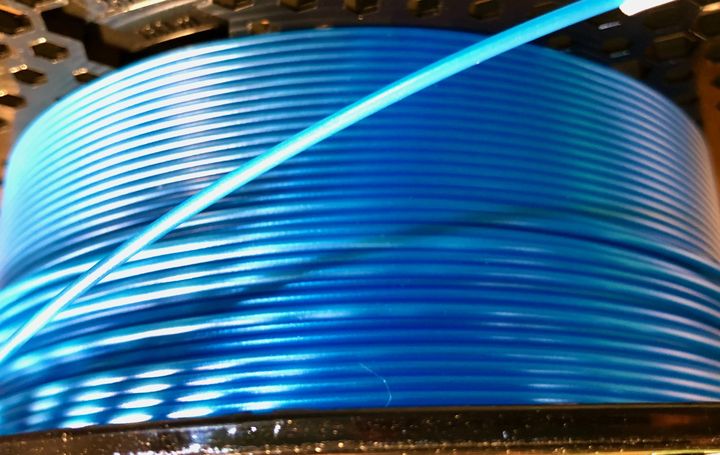
Another eco-friendly 3D printer filament? Hold on, there is a lot more to the story.
Lately we’ve seen a trend towards 3D printer products that are more eco-friendly, and that’s in general a good thing. But the terminology used is often confusing and even misleading at times.
Let’s take a look at the different terms and see what they really mean.
Recycled Filament
This one is pretty clear: the product has been made from materials that were recovered, and presumably would have otherwise been dumped into landfill.
There’s a bit of a catch, however: do you know exactly how much of the material was recycled? Is it ALL of the material, or only a portion? Sometimes you’ll see a product stating “100% Recycled”, which means the entire spool is made from recycled material. If you don’t see that, then the material is a blend of fresh and recycled material, and that might mean a very small percentage.
Be aware when selected “Recycled” filament, as it may not truly be entirely recycled.
Recyclable Filament
This means that the filament is capable of being recycled. This is often the case for thermoplastics, as by definition you simply heat them up and re-form them. It would be possible to chop up waste 3D prints and re-extrude them into filament.
While some filament manufacturers do this, it’s also possible for individuals and labs to do this with the right equipment. One example of this functionality is found with 3DEVO’s inexpensive filament production machine, which many use to produce their own recycled materials.
One huge issues with recycling filament is that often the collected material is not uniform: it’s different colors, or worse, has varying chemistries. This makes it quite problematic to recycle, and most larger-scale recycled filament operations source their input material in only a single form. For example, “only Pepsi bottles” might be collected to produce recycled PET filament.
Biodegradable Filament
Biodegradable means that the material will, at some point, disintegrate in the natural environment. Thus, if you bury some of it in a landfill you’d expect it to disappear in future months or years.
The problem with “biodegradable” is that it isn’t properly defined. Some might say that PLA is biodegradable, but in fact it requires an exposure to a combination of high temperatures and specific chemicals over a longer period of time. That’s not exactly what you’d find in a natural environment, and thus PLA objects are really no different from ABS or other materials that are not labelled “biodegradable”.
Biocompatible Filament
Non-toxic filament is simply a material that can be safely exposed to human tissue for a specific length of time. In this case, “safely” means that the majority of humans would not develop a reaction during that period. For example, some might be safe to lay on exposed skin for 48 hours, while others might be safe to surgically embed in a person’s arm for a lifetime.
Unfortunately, biocompatible filament is often with unspecified parameters. Is this something that passes the one-hour skin test only? Or is it a more robustly biocompatible material that can be safely used for longer periods? We usually don’t know.
Non-Toxic Filament
Non-Toxic 3D printer material does not adversely affect the human body upon exposure. Some may induce reactions, but a non-toxic filament would not.
However, there’s other twists to this story. Some filaments are safe in a solid state, but when vaporized during 3D printing, particularly when heated beyond safe limits, emit toxic gases that can be inhaled.
In other words, non-toxic means non-toxic in a specific state. If you deviate from that state, you’re on your own.
One more thing: many 3D printer filaments emit nanoparticles when heated. These very tiny objects float in the air and can be inhaled, and that could be problematic in some circumstances.
Natural Filament
Many unusual filaments have been made with “natural” materials, such as wood, bamboo, walnuts, coffee and even algae.
While these sound quite “eco-friendly”, as they seem to be made with natural ingredients, they are in fact merely a blend of regular polymers and the unusual materials. For example, a wood filament might be made with 75% PLA and 25% fine sawdust.
Does that make the filament truly “natural”? Not really. Does it put a dent into the petroleum industry by making at least a portion from natural materials? Again, not really because the amounts in question are stupendously small.
I will believe in a “natural” 3D printer filament when I find some growing on a tree.
Eco-Friendly / Environmentally Friendly Filament
These terms are sometimes used by marketeers in an attempt to brand their products with a positive shine, and to be clear, use of any of the properties above can be a good thing.
However, the term is used when ANY of the properties are present; you don’t get ALL of them.
In fact, I don’t think there is a single product that is recycled, recyclable, biodegradable, biocompatible, non-toxic and natural, all at the same time. You only get a couple.
Depending on your goals, you might choose a 3D printer filament based on some of these properties. But the most important thing is to understand what they really mean.
